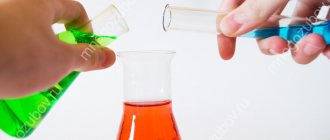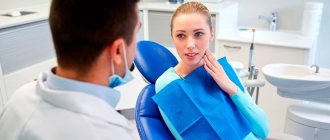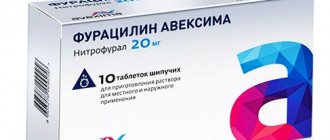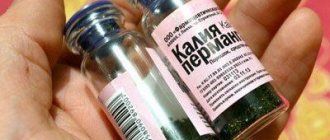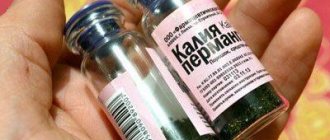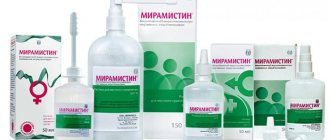Hydrogen peroxide is a substance that modern people always have at hand, because it is used in medicine and in everyday life, in clinics and at home. Recently, many useful tips have appeared on the use of this drug for rinsing the mouth for the purpose of disinfection, gum treatment and teeth whitening. But any medicine has contraindications and negative effects , so first you should figure out whether it is possible to rinse your mouth with hydrogen peroxide and how it should be diluted.
Is it possible to rinse teeth and gums with hydrogen peroxide?
You can rinse your mouth with hydrogen peroxide without harm to your teeth and body, but only with a solution with a concentration of no more than 3%. When rinsing your mouth with this liquid, several effects occur simultaneously:
Disinfection of the oral cavity.- Acceleration of healing of wounds and inflamed mucous membranes.
- Drying of the mucous membrane.
- Enamel whitening.
- Stopping minor bleeding.
- Cleansing the oral cavity from crusts, scabs, remnants of blood clots after injuries and operations.
This complex effect has led to the widespread use of this product in dentistry. Dentists prescribe peroxide rinses for the following conditions:
- Oral infections – stomatitis, candidiasis.
- Inflammatory processes - gingivitis, periodontitis, periodontal disease.
- Bleeding gums.
- Presence of dark spots on the enamel.
- The presence of bad breath is halitosis.
The product is used in the treatment of sore throat, otitis media and runny nose, as well as when lips become inflamed due to herpes. To do this, take a diluted solution, but it can only be used after consultation with the attending physician.
Step-by-step instructions for breeding
To disinfect pool water, it is better not to buy a technical solution, since it contains an admixture of salt and metals . This will slow down the decomposition of the peroxide.
The best option would be peroxide, used in medicine with a concentration of 35% to 37%. It is also the safest solution for humans.
Sometimes pool owners use a highly concentrated mixture of 60%. It is recommended to dilute it to 30% or lower. This is necessary for safe work with peroxide and to eliminate the possibility of damage to metal parts of the structure, which will lead to rust in the water.
In what and how?
A regular plastic canister is suitable for diluting a highly concentrated solution. To dilute the concentrated solution, use plain water.
To determine the amount of water for diluting 60% peroxide to 35%, you can use the following formula 1*0.6/0.35 – 1 = 0.71, where:
- 1 – one gram of water;
- 0.6 – peroxide 60%;
- 0.35 – peroxide 35%;
- 0.71 – amount of water for dilution.
This means that 1 liter of perhydrol will require 710 grams of water to make a 35% solution. The solution can only be mixed with drinking water that does not contain chlorine.
Cautions when rinsing teeth with hydrogen peroxide
To many, hydrogen peroxide seems like the most harmless antiseptic, but it has many contraindications and requires caution when used. The drug should not be used:
- For severe bleeding gums in patients with periodontitis.
- If there are a large number of fillings.
- Patients with a thin layer of enamel and caries.
- During pregnancy and lactation, due to the possible consequences of rinsing the mouth with hydrogen peroxide, not only for the mother, but also for the baby.
- For the treatment of children under 12 years of age. Children may rinse incorrectly and swallow the product. In addition, they are more sensitive to the unpleasant taste of the drug, which may cause them to vomit.
- During antibiotic treatment.
Hydrogen peroxide should not be taken orally. A solution with a concentration of more than 3% should not be used even for rinsing the mouth; it should be diluted.
Hydrogen peroxide must not only be used correctly, but also stored with precautions. A bottle of peroxide solution, perhydrol or hydroperite tablets - other pharmacological forms of this drug - should not be left in places accessible to children. Poisoning with this drug can be fatal. It is better to store the drug in a closed cabinet in a room where there is no strong increase in air temperature, otherwise it will lose its properties.
Factors affecting the concentration of the product
To determine the required concentration, a number of factors should be taken into account. First of all, this is the degree of pollution and the volume of the pool. For convenience, the level of pollution can be divided into 3 categories :
- low,
- average,
- high.
Table of relationships between factors and concentration:
The concentration is given per 1000 liters of water.
If concentrated peroxide has been stored for 6 months, its effectiveness when used will be reduced by 10-15% compared to the last time. Therefore, calculations should be made taking into account these losses.
How to properly prepare the solution and rinse your mouth
Before you rinse your mouth with hydrogen peroxide, you need to dilute it. It is recommended to take a tablespoon of hydrogen peroxide per glass of water. The solution should not be hot, but not cold either. Rinsing begins only after thoroughly brushing your teeth and rinsing the mouth with clean water; such manipulations will prevent unwanted chemical reactions between the components of the drug and the toothpaste.
The peroxide solution should not be kept in the mouth for too long; it is recommended to carry out the procedure for no longer than 10 minutes. During this time, you should periodically spit out the liquid and put a fresh portion into your mouth. After the procedure is completed, the product is spat out so that it does not remain in the mouth or enter the digestive system.
If the rules of rinsing are violated, nausea and vomiting may occur; in severe cases, burns of the digestive organs may occur. If you feel a strong burning sensation during the procedure, especially if there are ulcers on the oral mucosa, you should stop rinsing and rinse your mouth with clean water.
Gargling for adults
It is not difficult for adults to use the medicine in the fight against sore throat. As for any other group of patients, a 0.25% solution is used.
An additional effective remedy would be to lubricate the mouth during illness. The wiping solution should be slightly higher in concentration than the rinse solution, so you need to know exactly how much peroxide you need.
15 ml of peroxide is diluted in half a glass of warm water. A cotton swab is soaked in the liquid and the oral cavity is soaked as deeply as possible. It is an effective and more effective way to combat tonsillitis.
Can peroxide be used to whiten teeth?
Hydrogen peroxide can be used to whiten tooth enamel only if there are no contraindications. To make sure that the enamel layer is strong enough and not too thin, it is better to visit a dentist and consult with him about the possibility of using this product.
The following whitening methods are known:
- They take a mixture of hydrogen peroxide and soda, sometimes diluted with eucalyptus oil. The paste is applied to a toothbrush. After brushing your teeth, you need to rinse your mouth. Food can be taken no earlier than 20 minutes after the procedure.
- Three drops of the product are placed on toothpaste; it is recommended to use toothpaste for the treatment of periodontal disease.
- If there is a limited stain on the enamel, you can clean it with a cotton swab dipped in hydrogen peroxide. But first you need to undergo an examination by a dentist so as not to provoke the destruction of the enamel.
- Instead of a pharmaceutical 3% solution, sometimes they take hydroperite tablets and dissolve them in clean water: 2 tablets per 100 ml.
Teeth before and after whitening with hydrogen peroxide
Is it necessary to dilute?
To disinfect a swimming pool, peroxide should only be used in a diluted state. Concentrations of 60% and above are explosive .
If dirt gets into the container, it will trigger a chain reaction of decomposition into oxygen and water, followed by heating.
The temperature will rise up to 1000°. The water will immediately turn into a gaseous state, which will be 7000 times its previous volume. Therefore, the lower the concentration of the solution, the safer it is to work with it .
If peroxide is not diluted or a high concentration is used, during bathing the undecomposed reagent will enter the mouth, stomach, eyes or nasopharynx. This will lead to disruption of the immune system.
In a child, this can cause exacerbation of chronic diseases, as well as disorders of the gastrointestinal tract. However, if you use a weak solution, it will be useless to fight bacteria. This will also lead to the global development of pathogens.
Rinsing your mouth with hydrogen peroxide to remove odor
Halitosis can be caused by many dental and internal diseases. Hydrogen peroxide helps get rid of unpleasant odor if the cause of its occurrence is related to the condition of the oral cavity. Rinsing the mouth with this product for gumboils, periodontal disease, stomatitis, and gingivitis helps eliminate pathogenic microflora from the surface of the oral mucosa. And along with it, the smell, which is a consequence of the vital activity of microbes, disappears.
If the cause of halitosis is diseases of the internal organs, hydrogen peroxide will not be able to effectively combat oral odor. Disturbances in the functioning of the kidneys and liver, diabetes mellitus provoke the appearance of various foreign odors from the mouth, even with an admixture of chemicals: acetone, ammonia. They also cannot be eliminated by rinsing; targeted complex treatment is necessary.
In case of dysbacteriosis or infectious inflammation of the ENT organs, which also cause a putrid odor in the mouth, peroxide, when used correctly, can reduce the intensity of the amber.
To rinse your mouth, hydrogen peroxide must be diluted with water (pre-boiled). You need to rinse your teeth and gums for a minute 1-3 times in a row, after which the mouth is rinsed with clean water. The procedures are done three times a day for 3–5 days.
Indications for the use of hydrogen peroxide for gargling
The spectrum of effects of peroxide is wide. This is a powerful antiseptic that is used in medicine to disinfect wounds, work surfaces and instruments. H2O2 destroys the cell membranes of pathogenic microorganisms, therefore, in relation to throat problems, peroxide is simply irreplaceable. With its help, many diseases of the throat and oral cavity are treated:
- angina;
- tonsillitis;
- pharyngitis;
- laryngitis;
- stomatitis;
- thrush;
- gum disease;
- periodontal disease.
Everyone knows how difficult it is to treat purulent plugs on the tonsils. You can't do this without antibiotics. But using rinses with hydrogen peroxide will significantly speed up the process. Perhydrol quickly opens the plugs on the tonsils, destroys the purulent contents and literally displaces all foreign liquid and mucus from the formed cavities.
The patient's condition quickly improves, intoxication of the body is prevented, and the cleaned, loose structures of the tonsils return to normal.
How to prepare a solution - proportions and general treatment regimen
To prepare a hydrogen peroxide solution for gargling, it is important to follow these rules.
- Preparation of the throat and mouth. Before rinsing with a solution of hydrogen peroxide, your mouth and throat should be rinsed well with clean boiled water.
- How to dilute hydrogen peroxide? The proportions must be strictly observed: for 120 ml of water, 1 tablespoon of 3% hydrogen peroxide, or for 240 ml - 2 tablespoons.
- You can gargle only by strictly observing the dilution dosage. Pure hydrogen peroxide 3% can only be used to lubricate ulcers on a spot basis.
- If the peroxide is in tablets (they are called Hydroperit), then for rinsing, 1 tablet is dissolved in a glass of water.
- You need to gargle with a solution of hydrogen peroxide every 3 hours, but no more than 5 times a day.
- For one procedure you need to use 1 glass of solution.
- After rinsing with a peroxide solution, the sore throat should be “soothe” by gargling with chamomile decoction (for children), a weak solution of potassium permanganate, soda or sage decoction.
- Do not exceed the dilution proportions in any case, so as not to get a burn to the mucous membrane.
- The solution should be used immediately after preparation.
- The drug can only be diluted with clean boiled water. Do not use herbal decoctions or other solutions for dilution.
- Do not swallow the solution while rinsing.
- During the procedure, tilt your head back and gargle as you exhale. Slowly, without haste.
It is important! It should be borne in mind that gargling with hydrogen peroxide is used for antiseptic purposes and does not replace treatment with medications prescribed by a doctor.
Proportions for treating children of different ages - table
Gargling with a solution of hydrogen peroxide in children involves changing the dosage depending on age. How to dose the 3% solution and Hydroperit tablets in pediatrics, see the table. But in any case, get support from your doctor.
| Child's age | Preparation for dilution | Dosage per 120 ml water |
| Up to 5 years | 3% hydrogen peroxide solution | ½ teaspoon |
| Up to 5 years | Hydroperit (tablets) | 1/4 tablet |
| From 5 to 10 years | 3% hydrogen peroxide solution | 1 teaspoon |
| From 5 to 10 years | Hydroperit (tablets) | 1/2 tablet |
| From 10 to 16 years | 3% hydrogen peroxide solution | 1 dessert spoon |
| From 10 to 16 years | Hydroperit (tablets) | 3/4 tablets |
| From 16 years and adults | 3% hydrogen peroxide solution | 1 tablespoon |
| From 16 years and adults | Hydroperit (tablets) | 1 tablet |
Peroxide solution for lubricating tonsils
Purulent inflammation of the tonsils can be treated not only by rinsing. Foci of inflammation can be lubricated with a more concentrated solution: for 100 milliliters of warm water, take 3 tablespoons of a 3% H2O2 solution. It is convenient to lubricate the tonsils with cotton swabs dipped in the prepared solution.
If pain in the throat is accompanied by inflammation and swelling of the nasal sinuses, purulent mucus from the nose, this mixture can be dripped into the ears and nostrils.
Features of the treatment of sore throat
There are no easy or simple diseases. Even the most harmless cold, without proper treatment, can turn into a protracted course and complications. The sooner the diagnosis is made and treatment begins, the faster the recovery will come.
In cases of sore throat, delaying is not only impossible, but even dangerous. This acute infectious disease caused by dangerous bacteria can be treated quickly and successfully if antibacterial drugs, that is, antibiotics, are immediately used. You cannot tolerate the symptoms of a sore throat and wait for “everything to go away on its own”; you must urgently contact a medical institution for qualified help.
In addition to medications and to alleviate the condition, you need to gargle with antiseptic solutions: hydrogen peroxide, soda, salt, iodine, and herbal decoctions.
Rinsing alone, even with such a powerful antiseptic like peroxide, will not get rid of a sore throat.
As soon as angina (the acute form of the disease) becomes chronic, tonsillitis develops, a sluggish inflammation of the tonsils with periods of remission and relapse. Its treatment is more complicated. In addition to antibacterial therapy, vitamin therapy, immunomodulators, physiotherapy (UV irradiation, ultrasound, rinsing) and other treatment methods are necessary.
Other diseases of the throat and oral cavity
Laryngitis, an inflammation of the larynx, is dangerous due to its swelling and narrowing, and as a result - oxygen starvation. Treatment tactics depend on the cause of the disease. These are general-action medications, as well as gargling with a peroxide solution in the morning and evening, and a soda solution, which helps soften and moisturize the mucous membrane. If laryngitis is caused by an allergic reaction, infection, overstrain of the vocal cords, or exposure to toxic substances, complex therapy is necessary.
Pharyngitis, uncomplicated by a bacterial infection, can be successfully treated with rinses. It is important to alternate in one procedure a solution of hydrogen peroxide and a solution of calendula tincture (1 tablespoon per 1 glass of water) or chamomile decoction. Peroxide will disinfect the throat, calendula will soften and soothe the mucous membrane. If a bacterial infection occurs, you must take antibiotics according to a doctor's prescription.
Rinsing the mouth with a peroxide solution has been successfully used for dental problems (flux, gingivitis, bad odor, periodontal disease) and diseases of the oral mucosa (thrush, stomatitis). If these diseases are not advanced, peroxide will have a beneficial effect on the affected tissues and will accelerate the healing of wounds, ulcers, and abscesses.
Proportions during pregnancy
Many women are concerned about the question: is it possible to gargle with peroxide during pregnancy? Will it have any side effects on the mother and fetus?
During pregnancy, a woman can treat her throat with tablets and other acceptable pharmaceutical drugs. They are recommended for pregnant women and will not cause harm to health or disrupt the course of pregnancy. Doctors often prescribe Lizobakt, Ingalipt, Faringosept, Givalex, Kameton in such cases.
Rinsing is also recommended. Safe rinses during pregnancy are furacillin, sea salt, hydrogen peroxide, and chamomile decoction. Unless the doctor prescribes otherwise, the safest dosages will be “children’s”.
Regarding hydrogen peroxide 3%, you need to dilute it as for a child (1 teaspoon per 120 ml of water), but gargle more often, every 2 hours. The last rinse is clean boiled water.
A pregnant woman should have increased responsibility for her health. After all, the health and development of the child depends on her behavior. If you have any slightest problems with your throat, consult a doctor immediately. You cannot prescribe medications and procedures for yourself; you simply do not have the right to do so. Irresponsible behavior is fraught with unpleasant consequences, and it will be too late to regret it.
Consequences of using a highly concentrated composition
As mentioned above, peroxide breaks down into oxygen and water. It is also not expensive and does not have an unpleasant odor.
But, if you do not follow clear recommendations for use as a pool cleaner, perhydrol will provoke the following:
- dry skin;
- at increased concentrations – a painful burn;
- if water gets into the mouth and then the stomach, the person will suffer from irritation of the mucous membrane;
- loss of natural hair color.
However, peroxide cannot be called a strong disinfectant. In order to effectively destroy reproducing microorganisms in water, the concentration must be at least 200-300 grams per 1 m3 . This amount of perhydrol is considered harmful to humans.
How to treat wounds with hydrogen peroxide
First of all, hydrogen peroxide is valued for its therapeutic effect. It is often used to treat wounds. The solution can be applied to small wounds, which will remove dead tissue, prevent the spread of germs and stop bleeding. In this case, peroxide can be used once. With frequent use, you can stop the spread of beneficial bacteria involved in healing wounds.
For infectious acne, the solution can be used to treat the affected areas, which will speed up the healing process.
Safety precautions and common mistakes
If this is a highly concentrated solution, it can only be stored in a plastic container. It is also not recommended to dilute and pour perhydrol into another container.
If concentrated peroxide gets on your hands, eyes, or body, it will cause a severe burn. Therefore, before use, you must wear rubber gloves, safety glasses or a face shield.
When it comes to pouring reagent into the pool, the container should be held as close to the water as possible to avoid splashes on skin and clothing.
You will find a lot of important and useful information about the use of hydrogen peroxide to purify pool water in this section.
Alternative: 5 options for replacing hydrogen peroxide for cleaning a pool
If it is not possible or desirable to use an oxygen-containing product, disinfection can be carried out using alternative options instead. Among them, popular chemical preparations deserve attention, as well as installations with different operating principles that effectively disinfect water.
- Chlorine. Used for cleaning artificial reservoirs, regardless of their size. The advantages of chlorination are the speed of obtaining results and the long-lasting effect. If you overdose, the water will acquire a characteristic odor, and there is a risk (higher than that of hydrogen peroxide) of allergies, dry skin and even burns. Cost: 375 rubles per 1 liter.
- Bromine. Suitable for small pools. Unlike chlorine, it does not harm the human body, does not cause an unpleasant odor and can be used in ponds in which children swim. Disadvantages - high cost, high consumption, inability to use for outdoor pools (decomposes under the influence of ultraviolet radiation). How much does it cost: about 2,000 per liter.
- UV treatment. Ultraviolet radiation has a detrimental effect on pathogens, and in a short period of time, while being safe for humans. Under the influence of UV rays, water retains its chemical composition and physical properties. For better results, the method is often combined with chlorination. Prices for such an installation start from 200,000 rubles.
- Ozonation. Disinfection is carried out thanks to ozone - a powerful natural oxidizing agent that perfectly eliminates pathogens, cloudy tints and metal particles in the water. To protect vacationers, it is necessary to strictly observe the ozone concentration. An ozone generator costs about 20,000 rubles.
- Chlorine-free systems. Their work is based on the principles of oxidation. Water purification occurs when passing through a reactor chamber, which contains an ionizer and titanium electrodes. The use of chlorine-free systems improves water quality and almost completely reduces the need for chemicals. How much do they cost: 500,000-3,000,000 rubles.
How to remove stains with a solution
Hydrogen peroxide is actively used by housewives in everyday life. It helps remove any stains from countertops, tiles and other surfaces in the house. This will not only clean the house, but will also prevent the appearance and proliferation of harmful microbes.
Peroxide will help get rid of limestone deposits. To do this, you need to spray the solution onto the desired area, leave it for 2-3 hours, and then wash it off with a sponge and soap.
A lot of dirt collects on the tiles and stains appear, which are very difficult to remove over time. Peroxide will remove mold and refresh the appearance of the tiles. To do this, you need to mix the product with flour so that the consistency resembles a paste. Treat the ceramic surface with the resulting solution and leave overnight. Wash the surface in the morning, after which all dirt will disappear.
Reviews
Below are some reviews. If you have something to say, leave your feedback in the comments below the article, it will be useful to our readers.
Lovchikov Stanislav, Orenburg . “When I first heard that bad breath could be removed with peroxide, I thought it was quite dubious. But, since this product is inexpensive, I decided to try it. After just a couple of days, I realized that peroxide really works, and effectively and quickly. I recommend this to anyone who suffers from halitosis.”
Morozova Natalya, Krasnodar . “A friend of mine used peroxide to whiten her teeth and found that her breath became fresher. She advised me, I also decided to try it - the effect is good, my teeth are a shade whiter, and my breath is fresher. I used the product for a week and did not observe any unpleasant effects.”
If you follow safety rules and properly prepare the hydrogen peroxide solution, it will effectively fight various diseases of the growth cavity, and your breath will be fresh. However, not all diseases can be stopped with this remedy; first, you should consult a doctor.
5 Reasons Why Add Hydrogen Peroxide to Your Pool
Perhydrol has redox properties, thanks to which the product can be used to clean a home pool. Since an artificial pond requires regular maintenance for health reasons, it is worth listing the reasons explaining the need to use peroxide.
- Destruction of pathogenic microorganisms. Peroxide fights fungi, viruses, bacteria, and mold spores through oxidation processes. When oxygen atoms interact with pathogen cells, the cell walls are destroyed, which leads to the death of pathogens.
- Elimination of organic contaminants. In addition to debris, substances that are left behind by vacationers accumulate in the water: particles of skin, sweat, self-tanning, cosmetics. As a result of oxidative processes, they are easily removed by the filter system.
- Water purification. To return the water to its natural color, it is necessary to get rid of everything that causes cloudiness, in particular algae. The oxidizing properties of perhydrol make it possible to make water crystal clear, and the effect has a prolonged effect.
- Prevention of plaque formation on the walls of the pool. Peroxide not only eliminates mucus on the walls and its cause, but also protects against plaque formation over a certain period. This is possible due to the formation of active oxygen during the interaction of peroxide with water.
- Prevention of insect larvae. When the water becomes cloudy and green, mosquitoes, flies, and midges begin to actively lay larvae. Thanks to perhydrol, the pool remains suitable for swimming for a long time, since clean water without an unpleasant odor does not attract harmful insects.
Frequency of application of disinfection solution
To determine how often to disinfect your pool, you should pay attention to the weather .
For example, if there are many sunny days in a month and the weather is hot, in this case the treatment is carried out 2 times a month. At a temperature of 25C° and a moderate number of sunny days, the frequency can be reduced to 1 time.
It is also worth considering the contamination of the pool. There is no need to wait until it becomes too cloudy.
To determine the degree of contamination, you can take water into a transparent glass container and compare it with clean drinking water . If there is a yellowish tint and an unpleasant odor, it is time to disinfect.
How to dye your hair with hydrogen peroxide
You can dye your hair with the solution. It is especially good at covering regrown dark roots on bleached hair. It is necessary to blot the roots with the solution and leave for 30 minutes, then rinse well under warm water.
The product is also effective for gradual lightening with oxen. To do this, you will need to take equal amounts of water and hydrogen peroxide and add them to the sprayer. Then you need to spray the solution onto the strands and distribute evenly with a comb. Wait until completely absorbed. If you periodically carry out such manipulations, you will notice how the strands begin to lighten.
Contraindications and restrictions
Although hydrogen peroxide is a relatively safe substance, it is still a harsh alkali that must be used with caution. It is very important to adhere to the recommended dose of peroxide, and under no circumstances swallow the substance. If it enters the stomach, the following complications may develop :
- burns of the mucous membrane of the esophagus or stomach of varying severity;
- dizziness;
- nausea and vomiting;
- allergies.
A high concentration of peroxide if ingested can cause death.
Hydrogen peroxide should not be used in the following cases:
- childhood;
- pregnancy;
- lactation period;
- increased sensitivity of teeth;
- allergy;
- 2-3 days after tooth extraction - the product can damage the blood clot that covers the wound surface;
- taking antibacterial drugs.
Also contraindications for rinsing the mouth with peroxide are the following pathologies :
- violation of the integrity of the tooth;
- a large number of fillings and deep lesions of the oral mucosa;
- diseases of the liver, kidneys and digestive system in acute form;
- presence of braces and plates.
What is this substance?
Hydrogen peroxide is a combination of two oxygen molecules and two hydrogen molecules; it is colorless and odorless. The substance is very unstable and quickly disintegrates upon contact with pathogenic flora.
Reference! When hydrogen peroxide breaks down, molecular oxygen is formed; it has an oxidizing property, which is why it is used in medicine as a disinfectant.
Hydrogen peroxide is used only externally; internal use is not practiced . More than a hundred years ago, medical scientists found that rinsing the mouth with hydrogen peroxide is absolutely harmless. At that time, diphtheria and stomatitis were treated with this substance.
Hydrogen peroxide comes in different forms:
- Solution – 3%.
- Concentrated solution – perhydrol – up to 31%.
- Hydroperite – 35%. Available in tablets.
To rinse the mouth, you can use a 3% solution and hydroperite after dissolving it in water to the desired concentration. Perhydrol is used in pharmacology, as well as for disinfection of premises.
